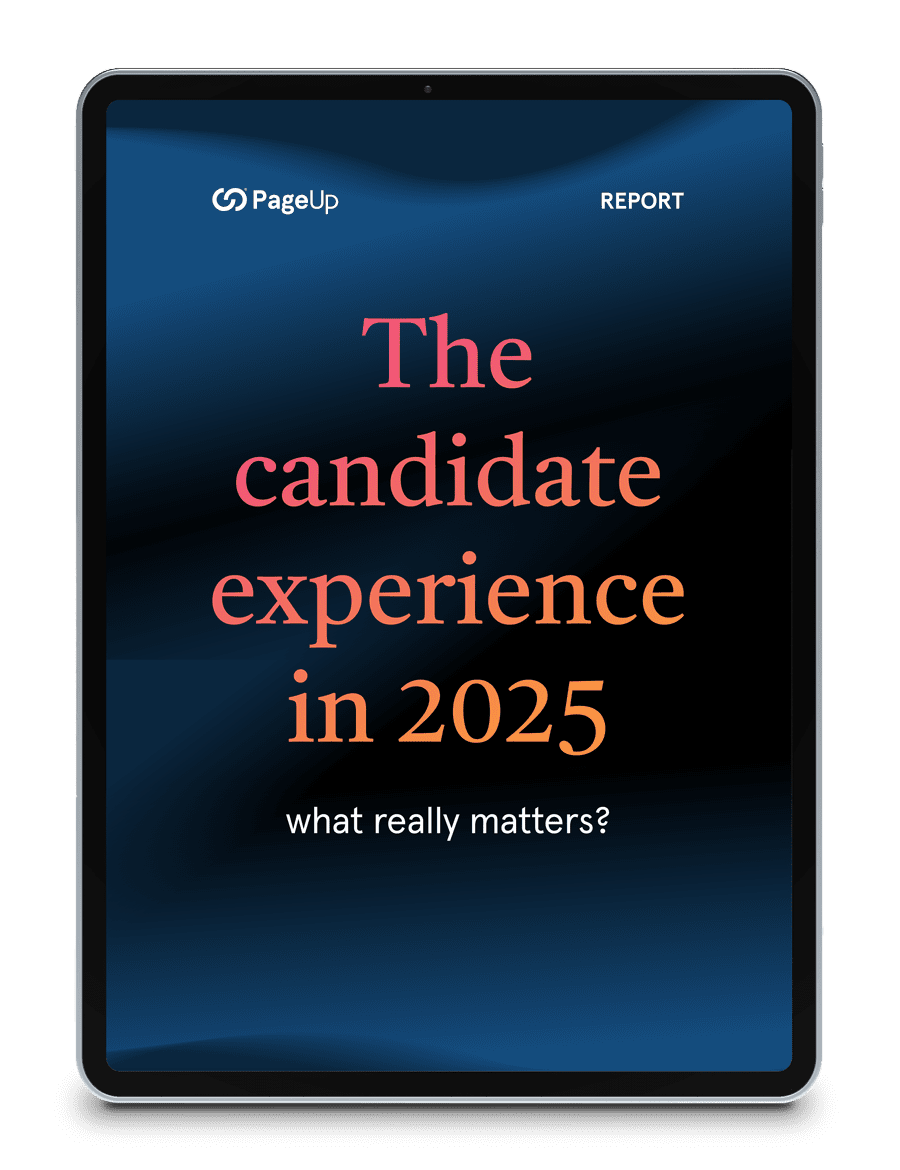Each new year brings with it new learning and development trends, and a few key themes are already shining through in 2019. OrganisationsOrganizations are placing a strong emphasis on learning, while employees want more control of what, where and when they learn. They’re also adopting both conventional and unconventional approaches to maximisemaximize their learning. This blog will uncover the latest trends in learning for 2019 including:
- Continuous learning culture
- Employee led learning
- People leaders as coaches
- Social learning
- Employee-curated content
- Mobile (aka on-demand)
- Microlearning
- Data and analytics
- Learning Experience Platform (LXP)
- Gamification, Augmented and Virtual Reality
- People data
The learning landscape is shifting. With continuous advances in technology, employees are taking control of their own education and development. OrganisationsOrganizations are stepping up to help shape the future of learning. They’re focusing on providing coaching, ongoing feedback and resources for learning opportunities.
Technologies which focus on usability and experience are helping improve learner engagement. Unsurprisingly, mobile and social learning are gaining traction and feature heavily in a modern learning environment. Learners are demanding just-in-time learning, where and when they want it.
Explore the shifts in learning with our updated learning trends for 2019.
1. Continuous learning culture

The shelf-life of skills is diminishing. The need for ongoing learning and development is greater than at any previous point in history. 38% of CEOs believe a shortage of key skills is the top people-related threat to growth. That’s up from 31% in 2017. With this in mind, it’s no surprise that building a culture of continuous learning is currently a priority for L&D leaders. This encompasses just-in-time learning designed to close a specific knowledge gap in a current role, right through to development of competencies and behaviours needed for future roles.
Today’s learner expects (and is expected to) continually learn and develop. This culture of continual learning is simultaneously driving and being reinforced by the shifting attitude to performance management. As everyday performance and ongoing feedback approaches gain momentum, the desire to upskill, develop and close skill gaps reinforces the symbiotic relationship between performance and development.
“The culture of continual learning is simultaneously driving and being reinforced by the shifting attitude to performance management.”
2. Employee-led learning

OrganisationsOrganizations are moving away from top-down driven development frameworks and empowering employees to lead their own learning. Some examples of employee-led learning include:
- moving away from a one-size-fits-all’ approach
- creating personalisedpersonalized learning paths to help develop employees in their current role, next role and future roles;
- basing content on both development needs and interests.
68% of employees prefer to learn at work, according to recent research by LinkedIn, but they don’t always have time to complete learning activities. In fact, the same research found that the #1 challenge for talent development is getting employees to make time for learning.
As the above diagram suggests, over half of employees (58%) want to learn at their own pace depending on their requirements, development needs and interests. But employees still want their manager’s input on how to improve, with 56% saying they would spend more time learning if their manager suggested activities.
Instead of a ‘one-size-fits-all’ approach, organisationsorganizations are creating personalisedpersonalized learning paths that develop employees in their current role, next role and future career paths.”
3. People leaders as coaches

Finding the time for learning is the number one development challenge employees face. The second-largest challenge is getting people leaders to take an active role in employee development. It’s no longer only the responsibility of the L&D department to ensure employees get the training they need. Learning professionals are now looking to people managers to own and develop their teams. Empowering people leaders to help employees on their continuous learning journey is becoming a priority. When it’s done well, it’s highly successful. Nearly three-quarters (74%) of employees who felt empowered to drive their own career say that their manager provides coaching and supports their development.
“Learning professionals are now looking to people managers to own and develop their teams.”
4. Social learning

In addition to social collaborative tools, organisationsorganizations are also experimenting with cross-functional project-based learning, creating online learning marketplaces and structured mentoring forums. At the very minimum, employees expect workplace technologies that allow:
- social networking
- instant messaging,
- online collaboration;
- video conferencing.
Humans are social by nature: 87% of employees say that sharing knowledge with their team is critical for learning. 34% of organisationsorganizations are already investing in social learning tools and over the next few years we anticipate the uptake will accelerate. The increasing complexity of work, rise of the contingent and freelance workforce, and the desire to work ‘anywhere, anytime’ will drive the adoption of social collaboration and knowledge-sharing tools.
5. Employee-curated content

Relevant content is what matters most to employees. Yet less than half (46%) of employees are satisfied with the relevance of the content provided by their organisationorganization. How can we help employees cut through the clutter? Employees want the ability to create their own online content and share learning resources. It’s no surprise that peer-to-peer learning continues to gain traction – empowering people to share relevant content with their colleagues.
OrganisationsOrganizations are also supporting apps which curate, publish and share content to keep peers, teammates and managers across the latest and most relevant content. Crowdsourcing means content is constantly refreshed, removing the barrier of irrelevant information which can deter time-poor learners.
“OrganisationsOrganizations are also supporting apps which curate, publish and share content to keep peers, teammates and managers across the latest and most relevant content.”
6. Mobile (aka on-demand)

Employees expect to access content anytime, anywhere via a mobile device. Although this trend isn’t new, corporate adoption levels have lagged behind employee expectations. Over three-quarters of employees do at least some of their learning on a mobile device and 99% of mobile learners believe the mobile format enhanced their learning. Despite this, mobile access is ranked as the second-largest challenge to learning from an employee’s perspective. Tellingly, access to mobile learning doesn’t register within the top three perceived challenges L&D professionals face. Looking to the future, 23% plan to purchase mobile learning solutions and this trend is expected to accelerate. OrganisationsOrganizations that want to improve the learning experience of their employees need to ensure mobile is part of the solution.
7. Microlearning

Making time for learning isn’t easy. Our constantly-connected lifestyles also means that attention spans are shrinking. A solution could lie in Microlearning: this is bite-sized chunks of learning content, completed in three to five minutes, that makes learning easily digestible. Some examples of successful microlearning can be found on popular mediums including:
- podcasts
- blogs
- eLearning
- videos
As a medium, videos are still a popular way to learn. More organisationsorganizations are turning to mobile devices to create quick, inexpensive, easily uploadable content. According to Training Journal (TJ) “In 2019, we can expect to see even more of this ‘guerilla’ film production with high-end features with interactivity that will be distributed on mobile devices and applications for easy accessibility.”
Online content can be parceled into smaller components, so employees can learn where and when it suits them.
This trend has been driven not only by a better understanding of how we learn, but also by advances in technology. The uptake of mobile and cloud technologies means content can be accessed as needed. This can have a positive impact on a company’s bottom line. OrganisationsOrganizations that empower their employees with microlearning experience a 63% increase in revenue compared to their peers.
“The uptake of mobile and cloud technologies means content can be accessed as needed. This can have a positive impact on a company’s bottom line.”
8. Data and analytics

Employee training budgets have increased year-on-year since 2017 from 33% and are expected to trend upwards in the coming years. In 2019, companies will spend $1100 per employee on training. Learning and development is a multi-billion dollar industry: with this level of expenditure, the stakes are high and the expectations of tangible returns are real. Executives are looking for financial returns, yet many L&D professionals struggle to tie real-world results to talent development spend. Nearly one-third (32%) of executives say demonstrating ROI is the top challenge for the talent development team. Only 22% of people managers feel the same. So how can organisationsorganizations measure and articulate the ROI of investing in learning and development? The key is to take an evidence-based approach to gathering learning insights that’s based on robust data and metrics. Articulating the ROI of learning and development initiatives requires assessing an organisationorganization’s development needs, analysing the outcomes of learning, then describing how this closes development gaps to drive productivity.
9. Learning Experience Platform (LXP)

The traditional Learning Management System (LMS) is no longer enough to meet employees’ expectations. Increasingly, organisationsorganizations are either replacing or augmenting the LMS with a Learning Experience Platform (LXP). Usability is the key to driving engagement and uptake of technology. Many organisationsorganizations recogniserecognize this and are placing learner and manager experience at the top of the priority list.
The LXP approach has the ability to personalisepersonalize the learning journey by:
- recommending content based on an employee’s current role;
- allowing employees to curate, publish and share content, based on experience or interests;
- using data and analytics to identify skill gaps and learning needs.
Although the LXP market is currently smaller than the LMS market, it’s hot on the heels of its predecessor, growing at 200% annually.
10. Gamification, Augmented and Virtual Reality (AR/VR)

Although gamification has been around for a while, we expect it will continue to gain traction as more millennials enter the workforce. Current research by HR Technologist states, “Younger generations today are intimately familiar with the concept of gamification. Most of them grew up with video games and smartphones, so gamifying corporate learning can become a natural extension of learning.”
Gamifying elements of learning such as compliance training gives people a ‘safe’ environment where they can take risks and get positive reinforcement. It also helps people see how they stack up against their peers, earn badges, collaborate and feel a sense of accomplishment.
Relative newcomers to L&D are Augmented and Virtual Reality. These technologies allow people to experience real life situations in a virtual sense, and reach their own conclusions in a safe environment.
“With AR and VR, you have technologies that have been shown to increase engagement and improve results”, reports the Association for Talent Development.
Companies who realiserealize its potential for learning and development should start experimenting now.
11. People analytics

Learning and development is not a stand alone function. It has a crucial role to play in underpinning the organisationorganization‘s strategic workforce vision. Forward-thinking organisationsorganizations are moving beyond descriptive to predictive analytics. Learning data is increasingly being incorporated into people analytics to understand the impact of learning on things like retention and staff promotion. People analytics help organisationsorganizations understand their workforce by making data about employee attributes, behaviour and performance more accessible, interpretable and actionable, according to research by ScienceDirect.
In situations where there’s a need to pivot quickly (opening a new office or factory in a different global location or simply re-shuffling people to upskill for succession roles), organisationsorganizations need to see who has the right skills or certifications to support them in a growth or reorganisationreorganization phase.
What’s next?
L&D professionals are faced with multiple challenges: juggling new technologies, shifts in learning styles and executive expectations to deliver tangible benefits. The shelf-life of skills is decreasing, the shortage of soft skills is increasing, and robotics and AI mean the future of jobs is uncertain.
Careful and deliberate adoption of technology to support organisationalorganizational learning culture is required. L&D leaders have now reached a pivotal point and are poised to launch their organisationsorganizations into a bright future (or watch their competitors overtake them).
Fresh insights for HR
Stay up to date with HR trends, tips and more when you sign up for our industry newsletter





